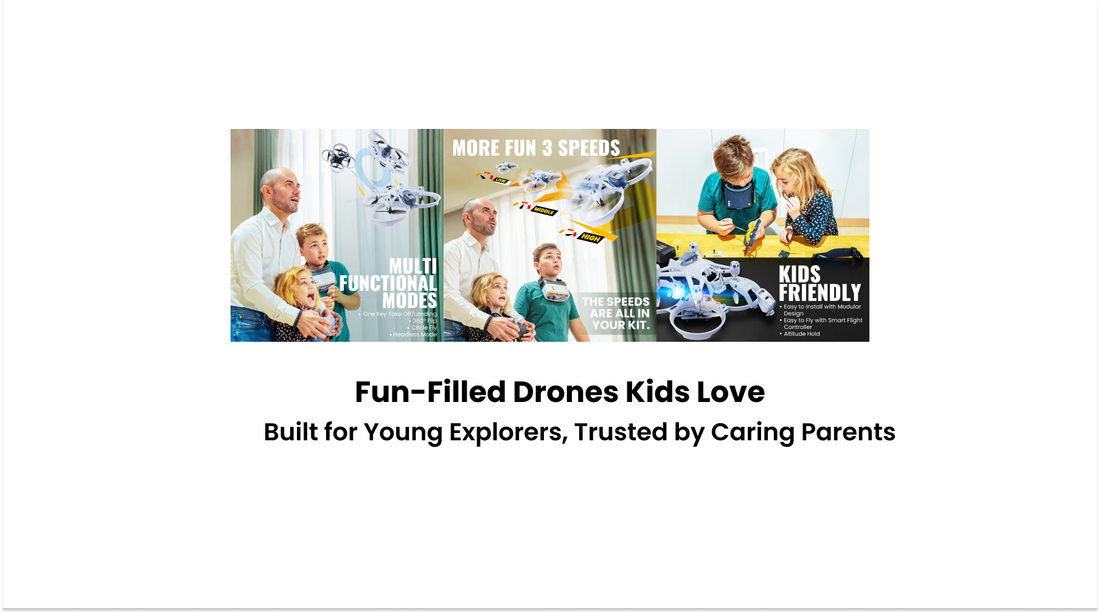
What Is The Best Racing Drone For Beginners? - By A Child Education Expert
Share
What Is The Best Racing Drone For Beginners?
The best racing drone for beginners isn’t just about speed—it’s about playful learning. Think of it as a child’s first bicycle: stable, forgiving, and full of ways to grow. The perfect starter drone balances safety, simplicity, and just enough challenge to keep young pilots engaged without frustration.
Why Drones Belong in Play-Based Learning
Picture a group of children huddled around a buzzing drone, their eyes wide as it flips midair. This isn’t just fun—it’s schema play theory in action. Kids test hypotheses (“What happens if I push this button?”) and refine motor skills through trial and error. A well-designed beginner drone aligns with PAL (Play and Learning) frameworks, where joy and discovery go hand in hand.
Take 8-year-old Liam, who struggled with teamwork until his school’s drone-racing club. Steering the drone through obstacles required patience and communication—core social skills hidden in play. That’s the magic of developmentally appropriate toys: they meet children where they are.
Choosing the Right Drone: A Developmental Lens
Toy shop owners know that parents seek tools fostering STEM/STEAM alignment. A beginner drone should feel approachable yet open-ended. Here’s how WorldlyLink’s curated lineup meets different needs:
The Entry-Level Model: Confidence Builder
DIY-Friendly Toy Drone with App Control is like training wheels for aspiring pilots. Its one-key takeoff/landing and altitude hold let kids focus on spatial awareness—an essential motor skills development strategy. When Emma (age 7) first tried it, she gasped as the drone obeyed her gentle joystick nudges: “It listens to me!” That instant feedback loop builds confidence.
The Mid-Range Model: Creative Problem-Solving
Advanced FPV Toy Drone with Customizable Features invites tinkering. Modular parts allow kids to adjust components, touching on engineering concepts naturally. For example, 10-year-old Carlos discovered that rearranging propeller guards changed flight stability—a real-world lesson in aerodynamics disguised as play.
The High-End Model: Immersive Exploration
FPV Toy Drone with Built-In Camera and Goggles transforms play into perspective-taking. Wearing the goggles, children experience flight through the drone’s “eyes,” blending technology with empathy (“How does a bird see the world?”). This multisensory stimulation deepens engagement.
A Call to Action: Start Simple, Dream Big
The ideal beginner drone grows with the child. For most young pilots—and toy shops serving them—the sweet spot is the entry-level model (found here) for its balance of safety and adaptability. As one teacher told me, “It turns ‘I can’t’ into ‘I did!’”—and isn’t that what playful learning should do?
